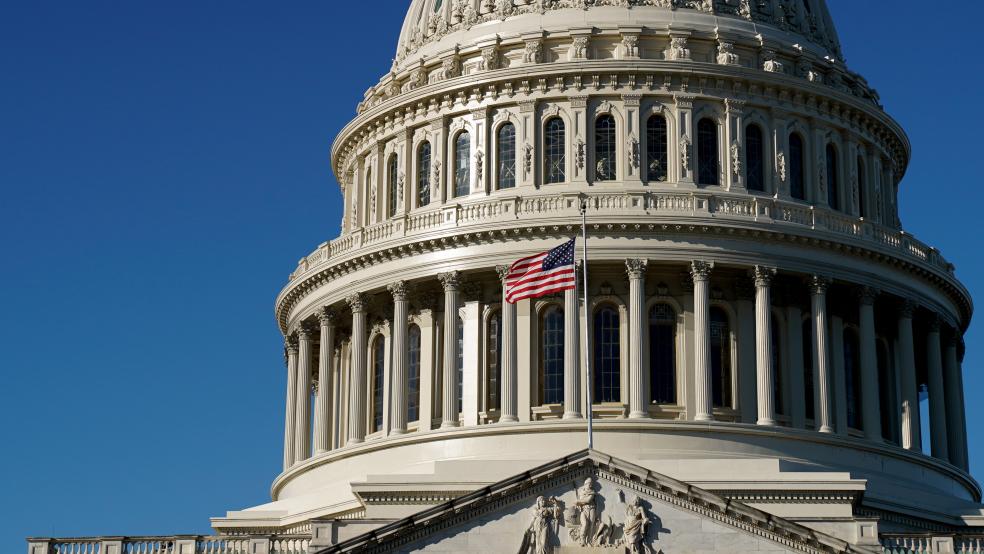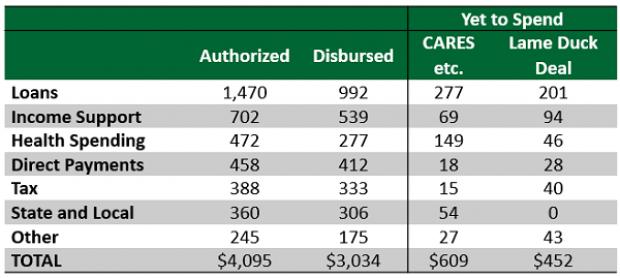Some critics of President Biden’s $1.9 trillion relief bill charge that it is too generous, citing among other things the hundreds of billions of dollars that remain unspent from earlier relief efforts.
“There's over a trillion dollars of money unspent from previous relief bills that were bipartisan," Republican Rep. Steve Scalise of Louisiana said last week. “The money's still sitting in a bank account and we're going to pass $1.9 trillion of additional spending to bail out failed states, to raise the minimum wage?”
Donald Schneider, an analyst at market research firm Cornerstone Macro who served as chief economist for the GOP House Committee on Ways and Means, recently tallied the unspent funds and came up with a total of more than $1 trillion (see the chart below). Congress authorized a bit more than $4 trillion in Covid relief spending in the Cares Act and the December relief bill, but has disbursed only about $3 trillion so far.
However, the unspent funds are not quite what critics seem to think. According to the Committee for a Responsible Federal Budget, the nonpartisan group that provided the data Schneider used in his analysis, “the question of how much relief money remains is a complicated one.” Most of the money is allocated and will be spent in the future, CRFB says, and a small amount will likely never be spent.
CRFB’s Marc Goldwein said Wednesday that small business assistance and Medicaid account for much of the undisbursed funds, with the payout for medical expenses occurring over a timeframe of several years. Referring to the Paycheck Protection Program (PPP) and Economic Injury Disaster Loans (EIDL) for small businesses, Goldwein tweeted: “Lots of PPP still to issue, slow/low demand for the EIDLs, and future Medicaid payments to states make up a lot of what’s left available.”





